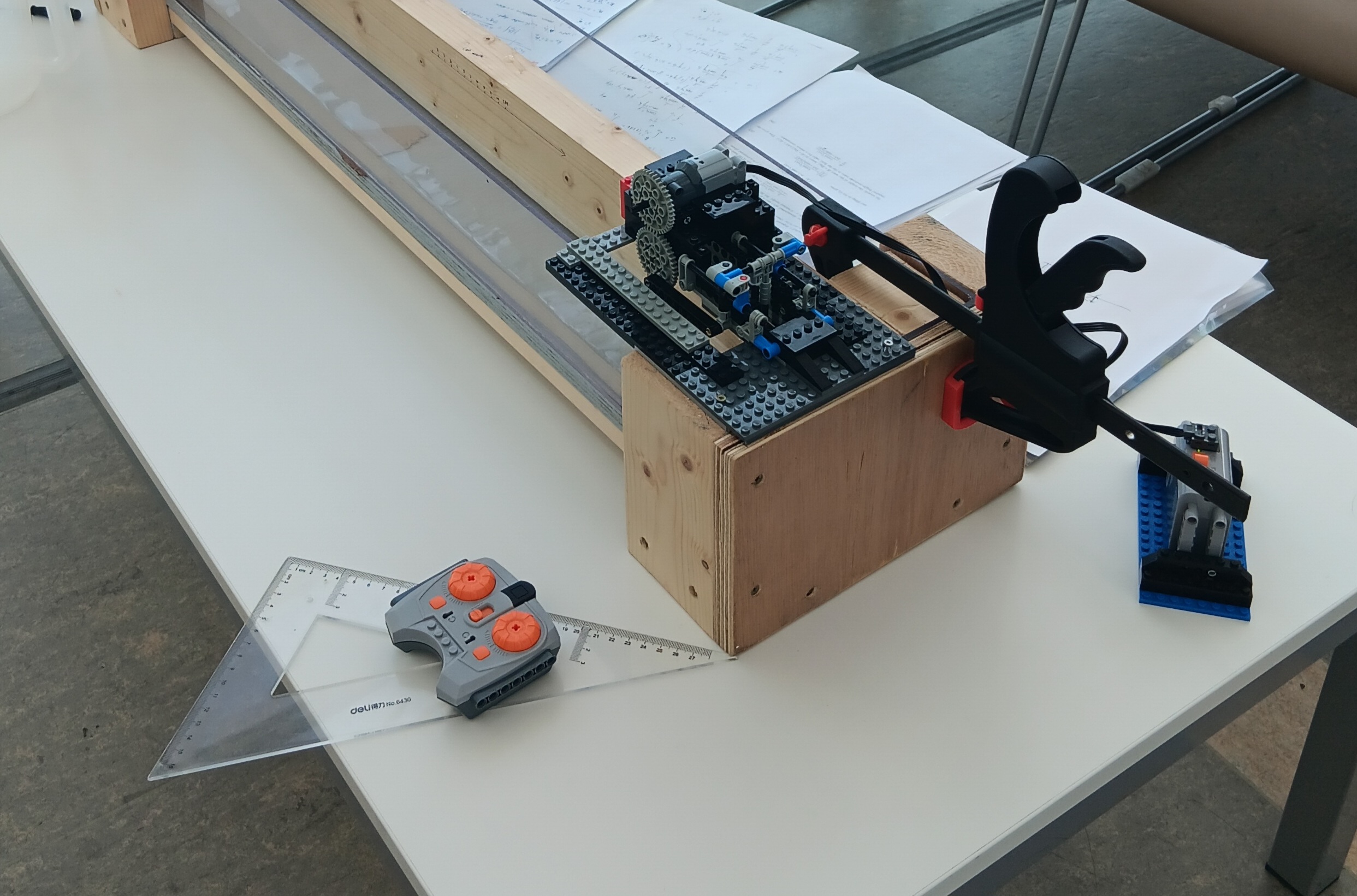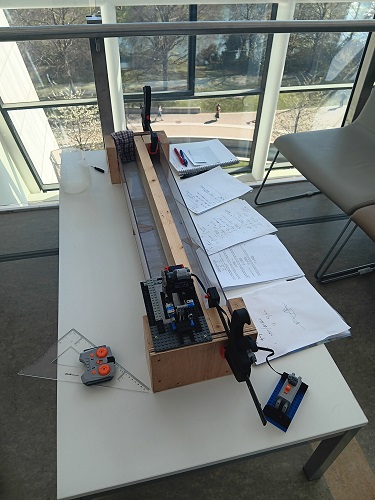Making (mini) waves in the Science Centre
Friday, 11 April, 2025
Share

Flumes are experimental devices used to study the flow of water in a channel, pipe or other watercourse. They allow researchers to observe water waves and test the mathematical theory describing them. They are often used by engineering researchers to understand the impact of waves on offshore structures like wind turbines and oil rigs, as well as for wave-energy harvesting, coastal engineering, and weather forecasting. However many disciplines study waves, and understanding the theory behind waves is a central research area in mathematics. Because the rich mathematical theory behind water waves can help to make predictions of wave behaviour, it's important to connect the theory to real-life waves.

I built this tabletop flume out of Lego, Perspex, and wood, for under €100. It's really just for teaching and learning, and outreach. I now have a couple of practical experiments in my graduate module in Fluid Mechanics where students get to apply their knowledge of mathematical and computational fluid dynamics to practical experiments. The students might not get their hands dirty but they do get them wet! In the wavemaker experiment, the application is the linear theory of water waves, so students get to verify the theoretical dispersion relation, which links water depth, piston stroke, and piston frequency, to the wavelength of the generated wave.
An important feature of the tabletop flume is the "artificial beach" (dishcloth), which damps the waves and ensures that wave reflections don't spoil the measurements. The waves generated by the tabletop flume are intermediate between long gravity waves (the ones seen in a "real" flume in a Civil Engineering lab), and the short capillary waves which you would see in a ripple tank. I won't be putting the real flumes out of business, as long gravity waves are the ones seen in nature and applications, for instance in coastal engineering.
In the wavemaker experiment, students are invited to perform the data analysis using their mobile phones. As mobile phones can capture video at a rate of 30 frames per second in very good detail, the students - without knowing it - have had a lab in their pocket for years. Now in this experiment the lab finally gets to be used, alongside the students' mathematical knowledge.
- (opens in a new window)Lennon Ó'Náraigh (School of Mathematics & Statistics)